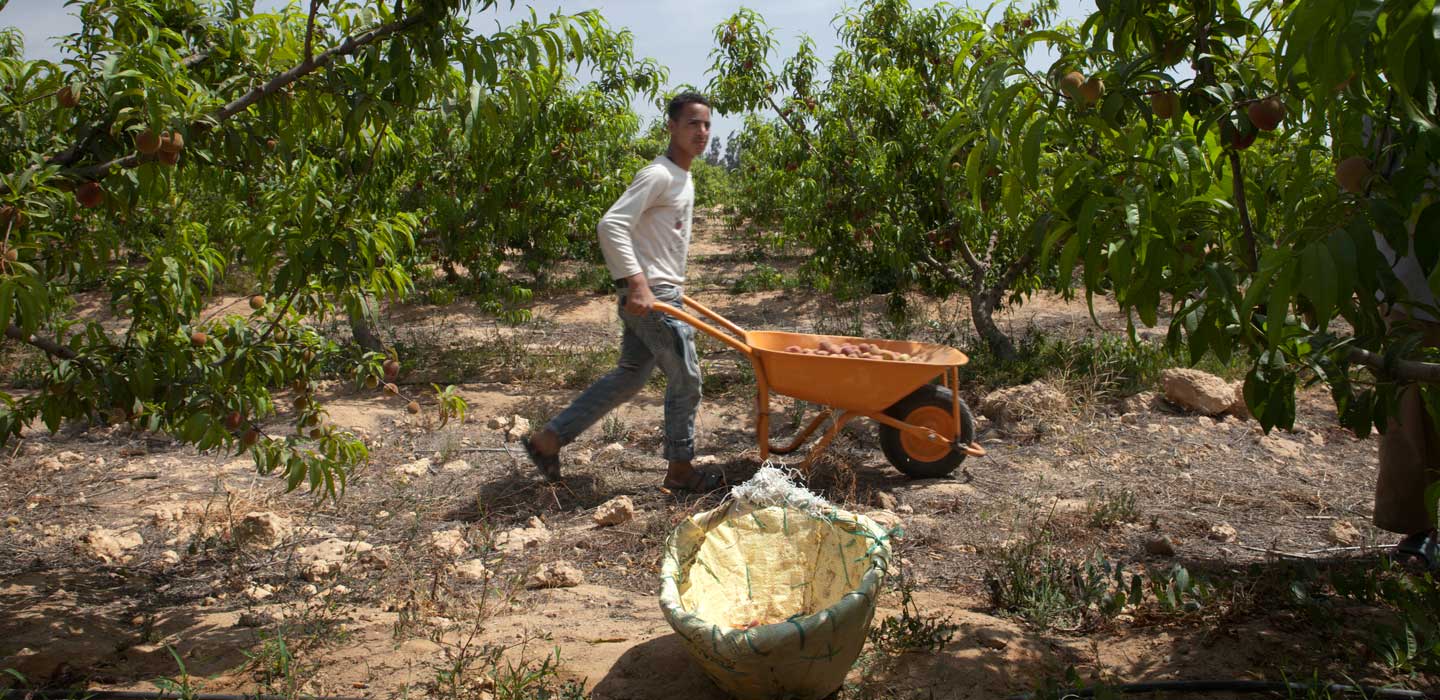Opportunities, challenges and limitations of climate-smart agriculture - The case of Egypt
IFAD Asset Request Portlet
Asset Publisher
Opportunities, challenges and limitations of climate-smart agriculture - The case of Egypt
Estimated reading time: 3 minutes
© IFAD/Marco Salustro
Climate-smart agriculture (CSA) aims to facilitate the evolution of agricultural systems in the face of a rapidly changing climate. IFAD's approach to promoting CSA for smallholders focuses on three core objectives: increasing yields and incomes in a sustainable manner; building adaptive capacity and resilience; and mitigating greenhouse gas emissions.
Egypt and the need for climate-smart interventions
Climate-smart interventions have the potential to soften the devastating blows that climate change could inflict on the agricultural sector in Egypt. By 2030, the country is likely to experience annual mean temperature increases ranging from 1.2 to 2.0°C above pre-industrial levels, with increases soaring from 1.6 to 2.9°C by 2050 and from 1.8 to 5.2°C by 2085. Models suggest that the sea level in the Eastern Mediterranean is set to see a rise in the range of +0.38 to +0.82 m by 2090, rendering large portions of the Nile Delta (Egypt's bread basket) unsuitable for agriculture. Temperature increases lead to elevated levels of evapotranspiration, placing a strain on already limited freshwater resources. The increased incidence of torrential rainfall events could lead to flooding, which in turn results in the loss of soil fertility. Additionally, research has found that the flow of the Nile, which dictates the prosperity of Egypt's agriculture, will become more erratic as a result of climate change. As a result, projections suggest that yields of staple crops could stagnate and dwindle. By 2040, wheat yields are expected to decline by 12 per cent, vegetables by 28 per cent, maize by 47 per cent and rice by 26 to 47 per cent.
IFAD and Egypt
Since 1980, IFAD has financed 13 projects in Egypt, amounting to a total of US$842 million, with IFAD financing accounting for US$456 million of that total. Currently, the portfolio in Egypt consists of four ongoing projects which collectively amount to US$380 million. IFAD has recently begun focusing on Upper Egypt and Marsa Matrouh in line with Government’s development priorities and poverty/vulnerability mapping.
Sustainable transformation for agricultural resilience in Upper Egypt (STAR)
IFAD's new project, currently in the design phase, will target three governorates in Upper Egypt where poverty is rampant. With a focus on rehabilitating old lands, the project aims to target 50,000 rural households, increasing the incomes and water-use efficiency of at least half of them. Furthermore, the project aims to ensure that 25,000 hectares are farmed using a climate-resilient water supply. The project will open the door to grant or highly concessional finance for irrigation equipment, greenhouses, shelterbelts, protective fencing and many other climate-smart interventions, deploying the tools of digital agriculture to facilitate sustainability and cost-efficiency.
Is climate-smart agriculture enough?
Despite the multiple benefits that IFAD's interventions and CSA more generally bring to farmers, projects like STAR are not a silver bullet and face a set of challenges to their scaling up, as well as intrinsic limitations.
As an example of barriers to scaling-up, water is almost free of charge to farmers in the Nile Valley, despite being scarce in Egypt, costing in practice only as much as the fuel required to pump it from the irrigation canals. Moreover, fuel is highly subsidized, which creates a strong disincentive at farmer level to use water and energy efficiently. But changing this situation through strategies like water tariffs and reduced fuel subsidies without the simultaneous development of a reliable social safety net could push millions into poverty and drastically affect the stability of the country. Projects like STAR are thus constrained to work mostly with "the carrot", a very expensive approach.
Beyond specific challenges that vary according to context, lies a fundamental limitation of CSA that has to be acknowledged: it is a "supply-side" approach. The food system currently generates about one third of all global greenhouse gases, and meat production alone accounts for half of that climate impact. Food commodity markets are increasingly globalized and integrated. Most growth in market demand globally is for increased amounts of meat, dairy and more convenience through transformed products that contain high amounts of palm oil, salt, sugar and animal protein that travel thousands of miles back and forth between points of production, transformation and consumption, further increasing the carbon footprint of the food system. What's more, that dietary transition is associated with increasing rates of obesity and diabetes, thus contributing to the "double burden" faced by numerous emerging countries, including Egypt, where under-nutrition coexists with excessive and unhealthy eating.
Climate-smart agriculture is the cornerstone of IFAD's efforts to boost the resilience and adaptive capacity of smallholder farmers. But, in Egypt and elsewhere, this cornerstone deserves a solid foundation. The foundation of a resilient food system is a sustainable and healthy diet. No agricultural system can be climate-smart enough to feed the world with a climate-crazy diet.
Read more about IFAD and Egypt and climate and environment
Publication date: 21 June 2019